A bullet train journey across Uzbekistan
Embrace slow travel on Uzbekistan’s new bullet train network, says Peter Ford
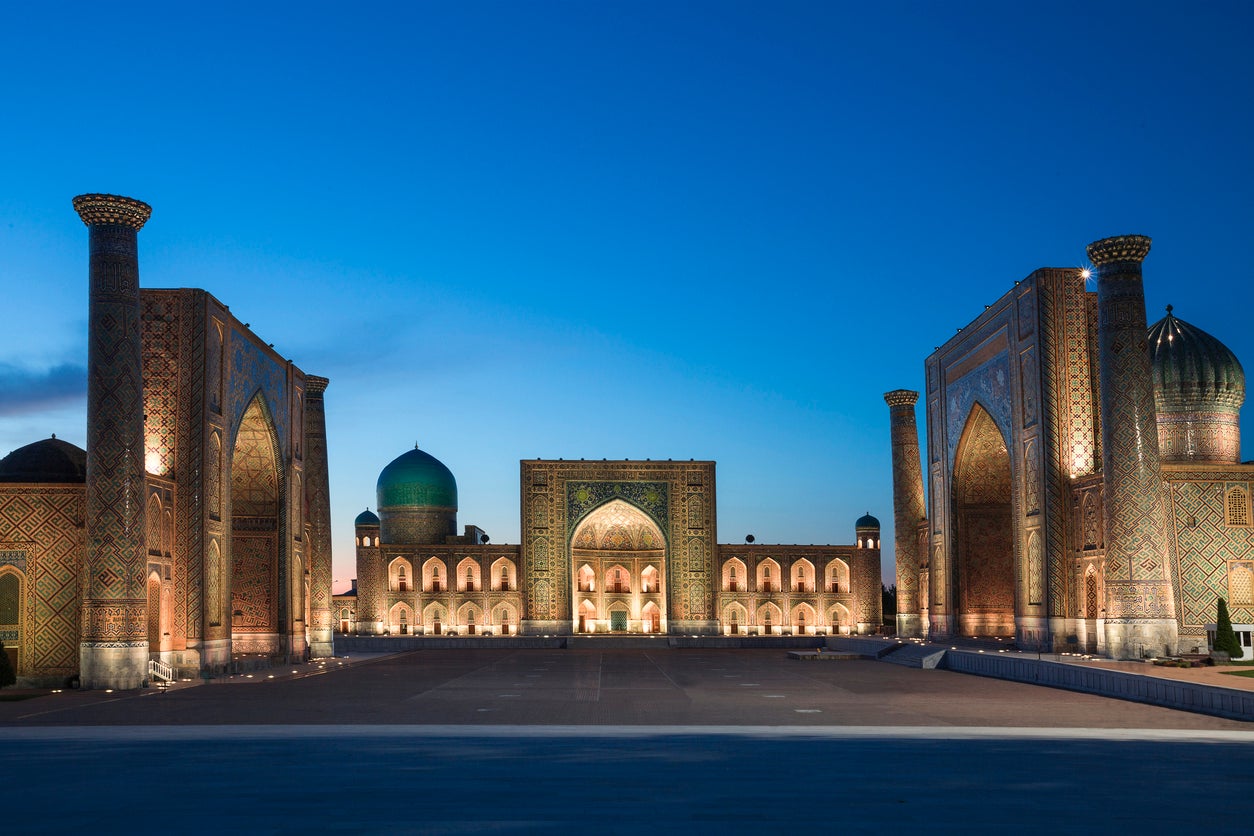
Your support helps us to tell the story
From reproductive rights to climate change to Big Tech, The Independent is on the ground when the story is developing. Whether it's investigating the financials of Elon Musk's pro-Trump PAC or producing our latest documentary, 'The A Word', which shines a light on the American women fighting for reproductive rights, we know how important it is to parse out the facts from the messaging.
At such a critical moment in US history, we need reporters on the ground. Your donation allows us to keep sending journalists to speak to both sides of the story.
The Independent is trusted by Americans across the entire political spectrum. And unlike many other quality news outlets, we choose not to lock Americans out of our reporting and analysis with paywalls. We believe quality journalism should be available to everyone, paid for by those who can afford it.
Your support makes all the difference.The 7.28am train to Bukhara, via Samarkand, pulls out of the Uzbek capital Tashkent on time. The Spanish-built Talgo bullet train will reach over 137mph as it speeds across the largely flat expanse of central Uzbekistan on its way to the country’s cities and religious buildings associated with the rise and fall of empire and its Silk Road trade history.
As train travel benefits from the renewed appeal of slow travel – taking the most energy-efficient transport option, not necessarily the quickest – crossing Uzbekistan’s vast landscape by rail is something the country is keen to promote.
Construction of the Tashkent to Samarkand bullet train line began in 2011, with the goal of halving the travel times of the ageing Soviet-era rail network that the country inherited in 1991 with its independence from the Soviet Union.
The country’s still-expanding high speed rail network, the continued loosening of travel restrictions and the beauty of its many Unesco World Heritage-designated attractions are all succeeding in attracting a growing numbers of visitors. As more than 60 countries now enjoy visa-free travel to Uzbekistan, 5.3 million arrived in 2018 and 9 million are expected annually by 2025.
The bullet train has made travel around Uzbekistan and three of its four most popular tourist destinations easy and affordable, as well as being part of the tourist experience itself. Travel between the capital Tashkent and desert city of Bukhara was once a day-long train ride or expensive flight, but since 2016 the 373mph journey was cut to just under three and a half hours.
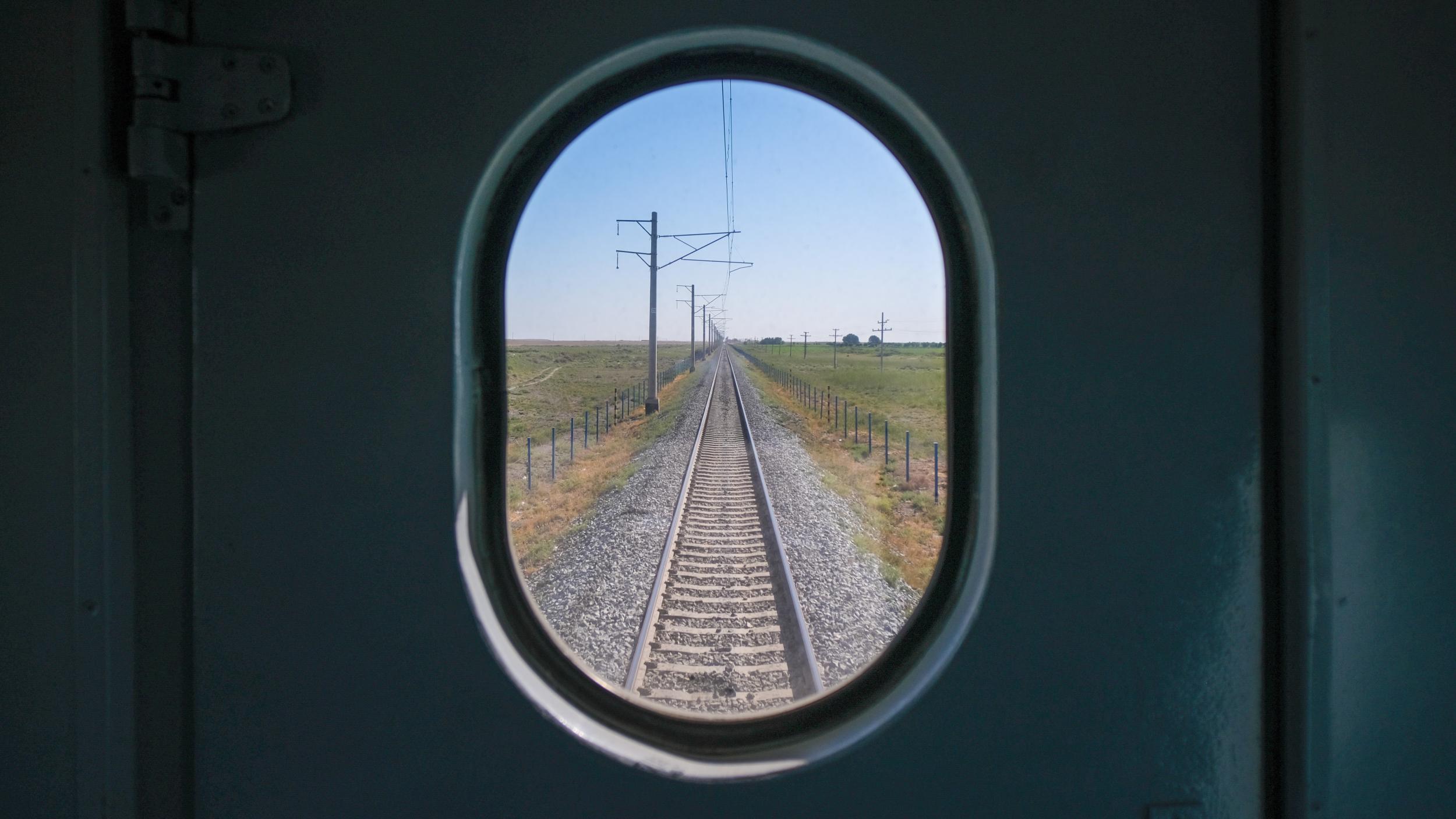
Fellow rail passengers show off the multi-ethnic nature of the region with Russian, Uzbek, Kazakh, Kyrgyz and Tajik all riding together. The Georgian sparkling water, Russian beer, Uighur lagman noodles and Kazakh chocolate for sale further drive this point home. It’s possible to travel to Uzbekistan by train from Europe and China via Russia and Kazakhstan, and connections to neighbouring Kyrgyzstan and Tajikistan are being updated as relations improve.
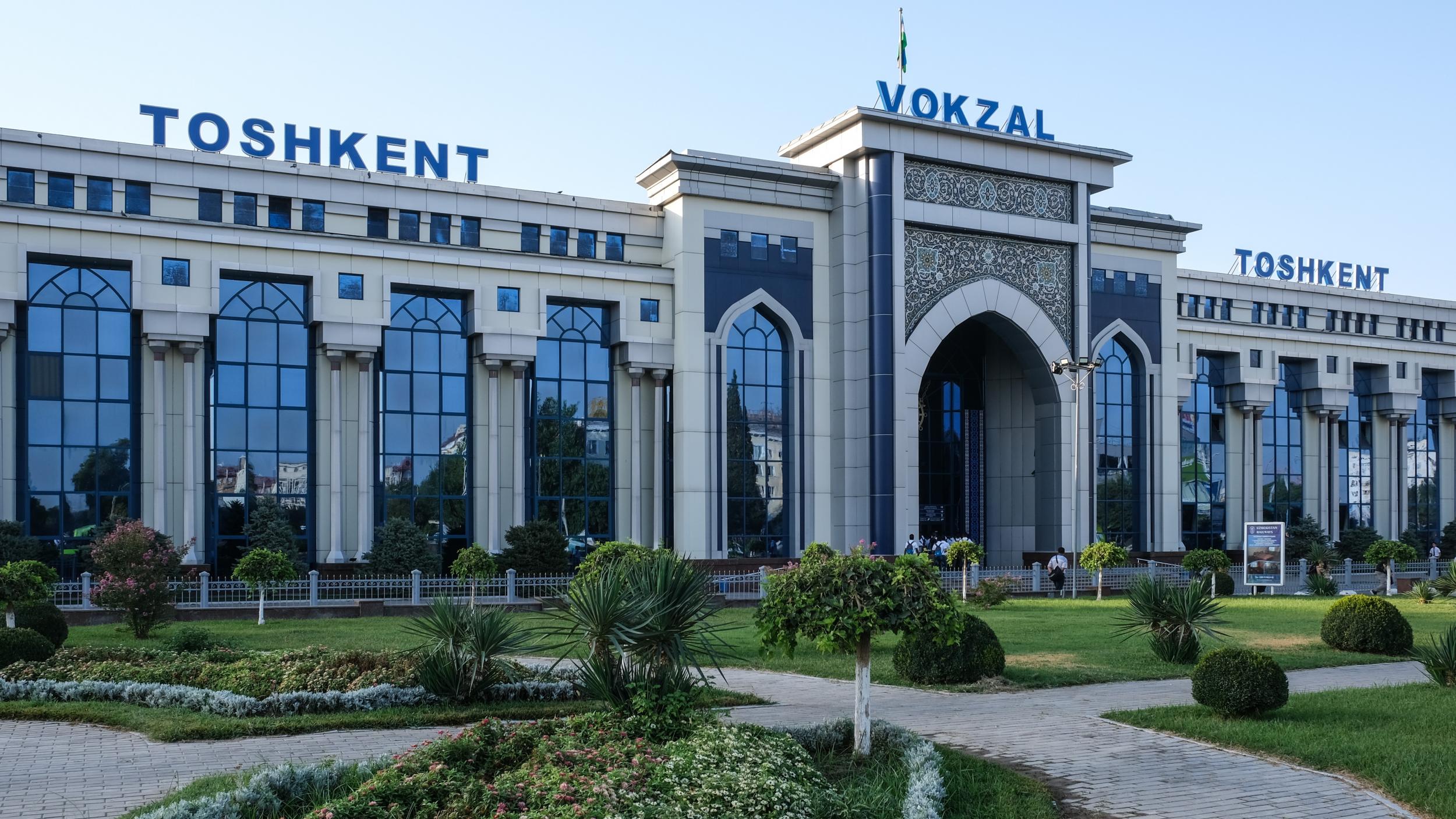
For most visitors to Uzbekistan, the capital Tashkent will be the first stop as it’s the terminus of most of the international train routes, and home to the country’s major airport. Once the fourth largest city in the Soviet Union and still the most populous in Central Asia with 2.5 million residents, Tashkent has wide, tree-lined boulevards and parks, imposing Soviet-era buildings and an increasing number of shopping centres and glass-fronted skyscrapers. It's worth planning a few days here to properly explore.
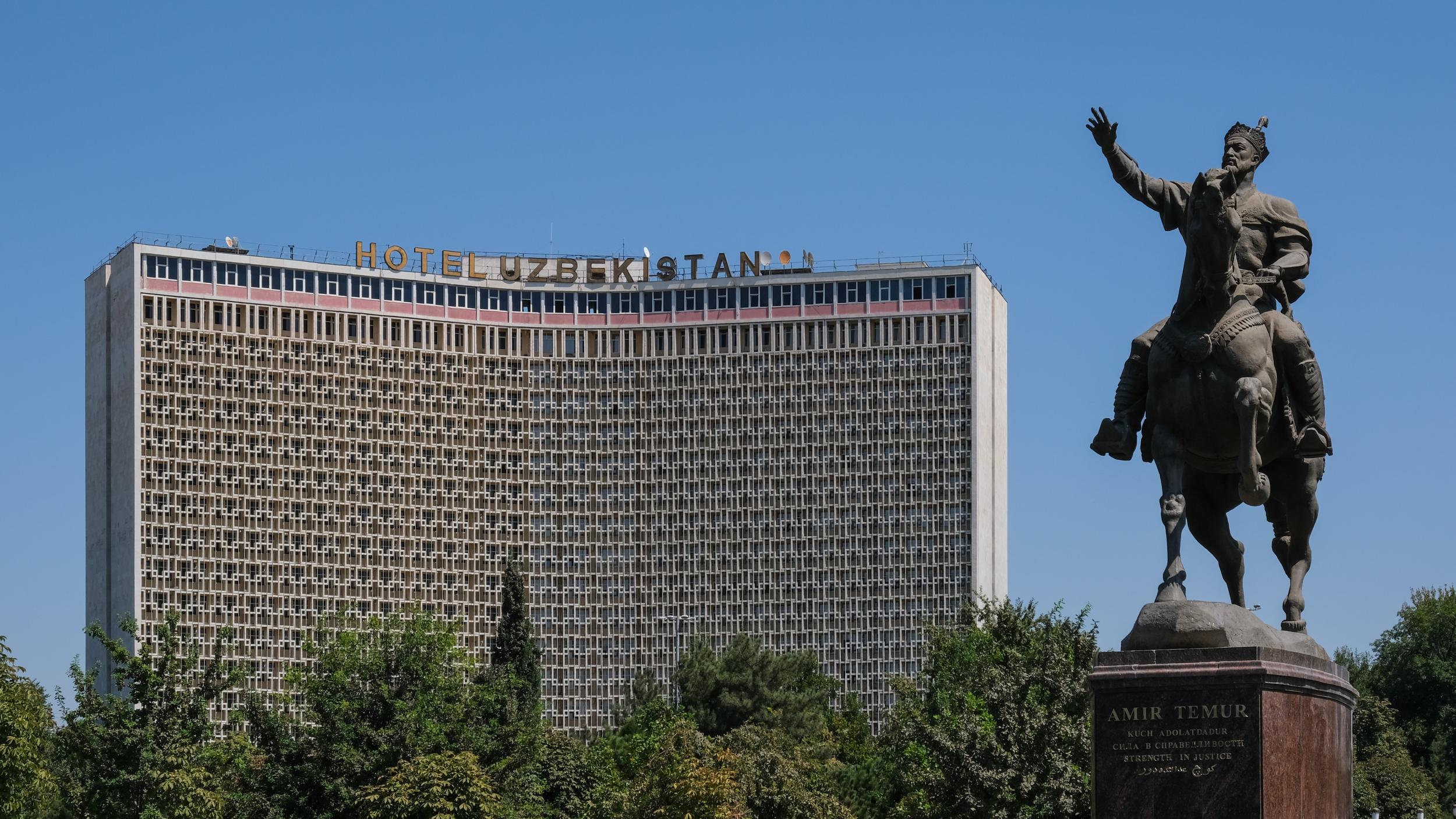
The contrasting architecture of the city’s various neighbourhoods clearly highlights its history. The narrow alleys and high walls of the traditional and ever-shrinking old town; the ornate Imperial Russian buildings that followed the 1865 conquest of the city; the Soviet love of concrete, as typified by the monstrous Hotel Uzbekistan; and the post-independence demonstration of Uzbekistan’s wealth from cotton, gas and gold, with new construction everywhere across the city.
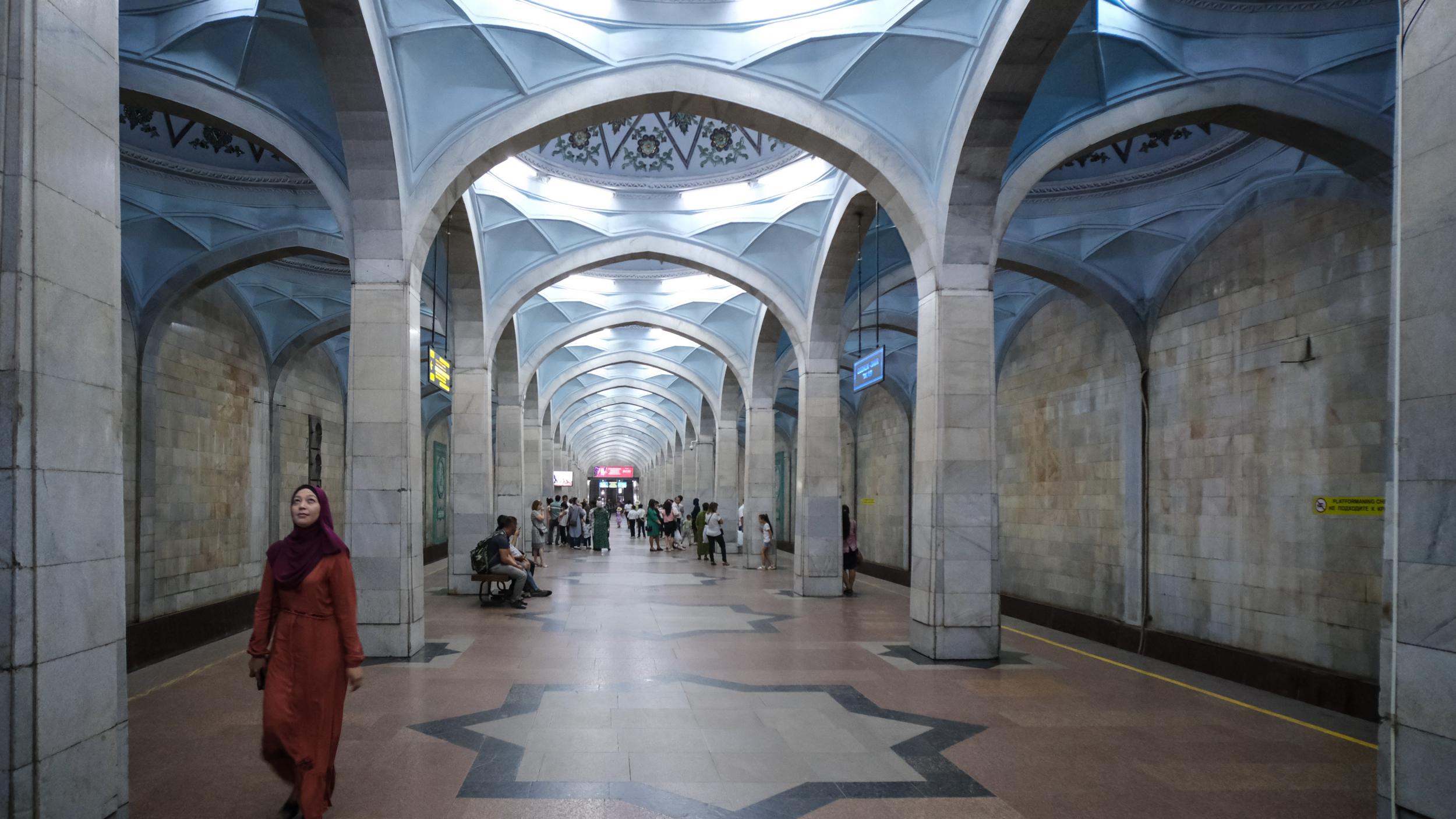
Yet Tashkent’s standout tourist attraction is underground. The metro, opened in 1977, is a stunning example of the Soviet provision of art for the people; each station offers something different and the mosque-like design of the Alisher Navoiy station, with ornate tile work and arched ceiling, is a standout attraction. Photography has been allowed only since 2018, when the restrictions were lifted on photographing military installations – the metro formally doubles as the city’s nuclear bomb shelter – and with a single journey costing less than 15p, a few hours riding the rails amid the 200,000 daily commuters as they pass Yuri Gagarin murals and walk under vast chandeliers is a cheap city experience to remember.
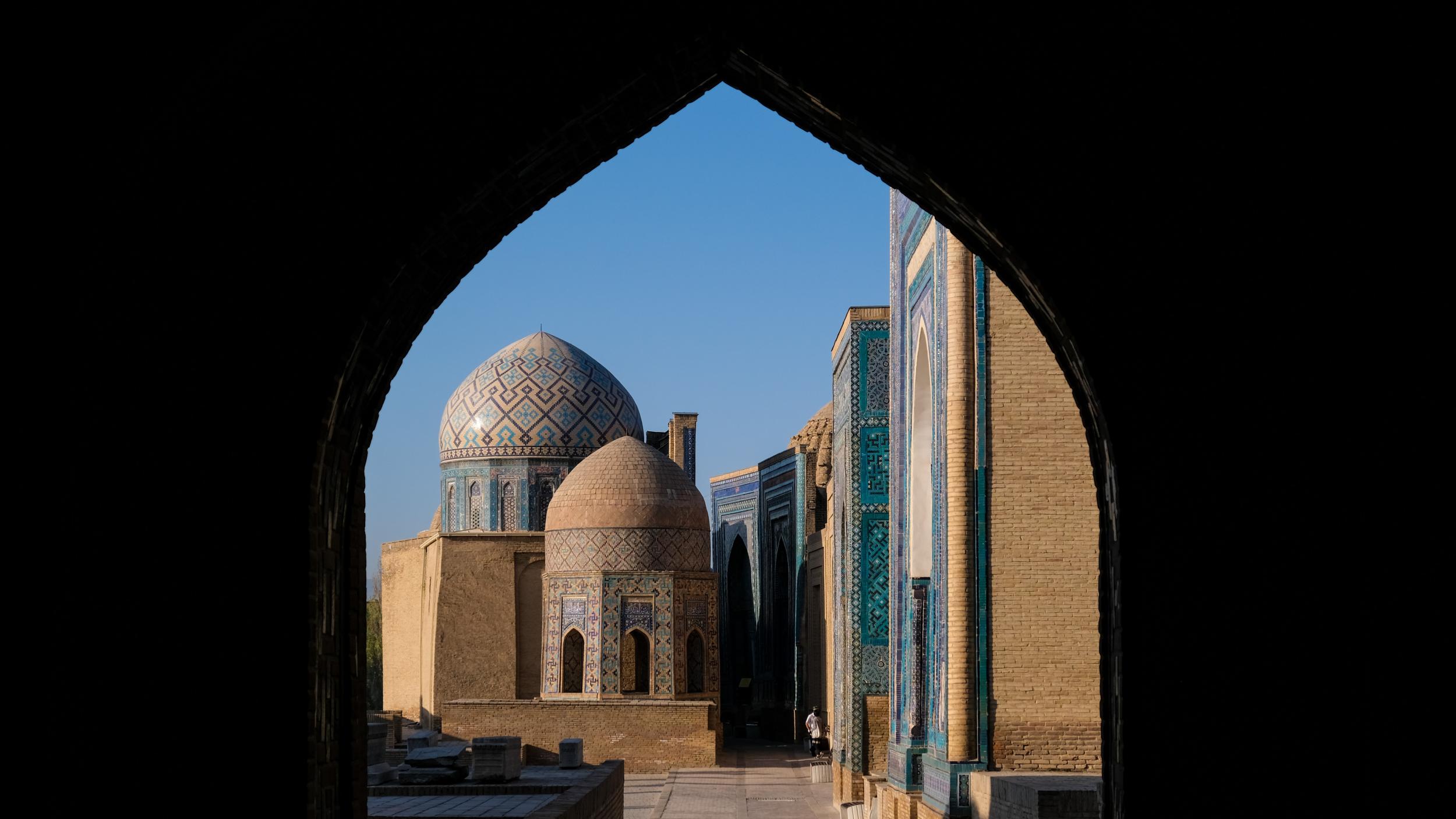
From Tashkent it takes about two hours to reach Samarkand by bullet train. Deep blue lakes and vivid green fields pass in a blur as the train whizzes south past the small beige villages, large expanses of farmland and scrubland towards the country’s second city and its most famous attraction – the Registan, the restored historic centre of what was once one of Asia’s most important cities.
The city’s large train station to the north of the city is an easy taxi or bus ride away from the sights. For visitors maintaining the slow travel ethos, the newly opened tram line 2 is a 15-minute ride to the Siyob market terminus, from where it’s only a short walk to the heart of the hotels, restaurants and attractions of the old town.
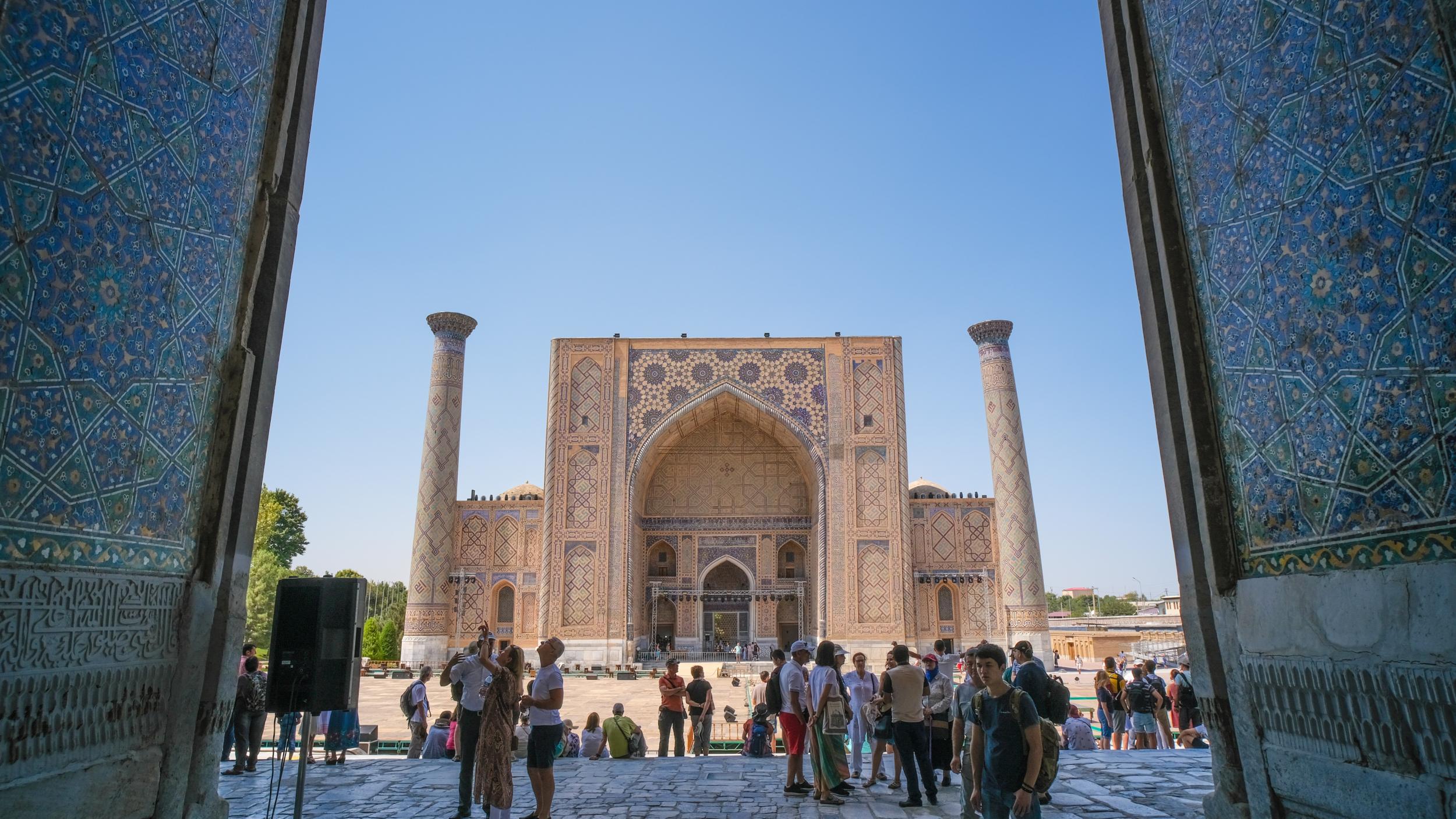
Conquered by Alexander the Great in 329BC and sacked by Ghengis Khan in 1220, before becoming the centre of Turco-Mongul conqueror Timur’s empire by 1370, Samarkand has been a religious, political and military centre for some of the world’s most infamous men.
Timur’s successors built many of the mosques and madrassas that still impress today, with the Ulugh Beg Madrasa, Sher-Dor Madrasa and Tilya-Kori Madrasa together forming the Registan. It is breathtaking to see, and visitors at the time would've been as overwhelmed then as they are today.
The recent addition of the neighbouring Islam Karimov Park and nearby mausoleum to the country’s long-serving ruler, who died in 2016 after 27 years in charge, honour the man who led Uzbekistan’s post-Soviet transition mired in corruption and human rights abuses.
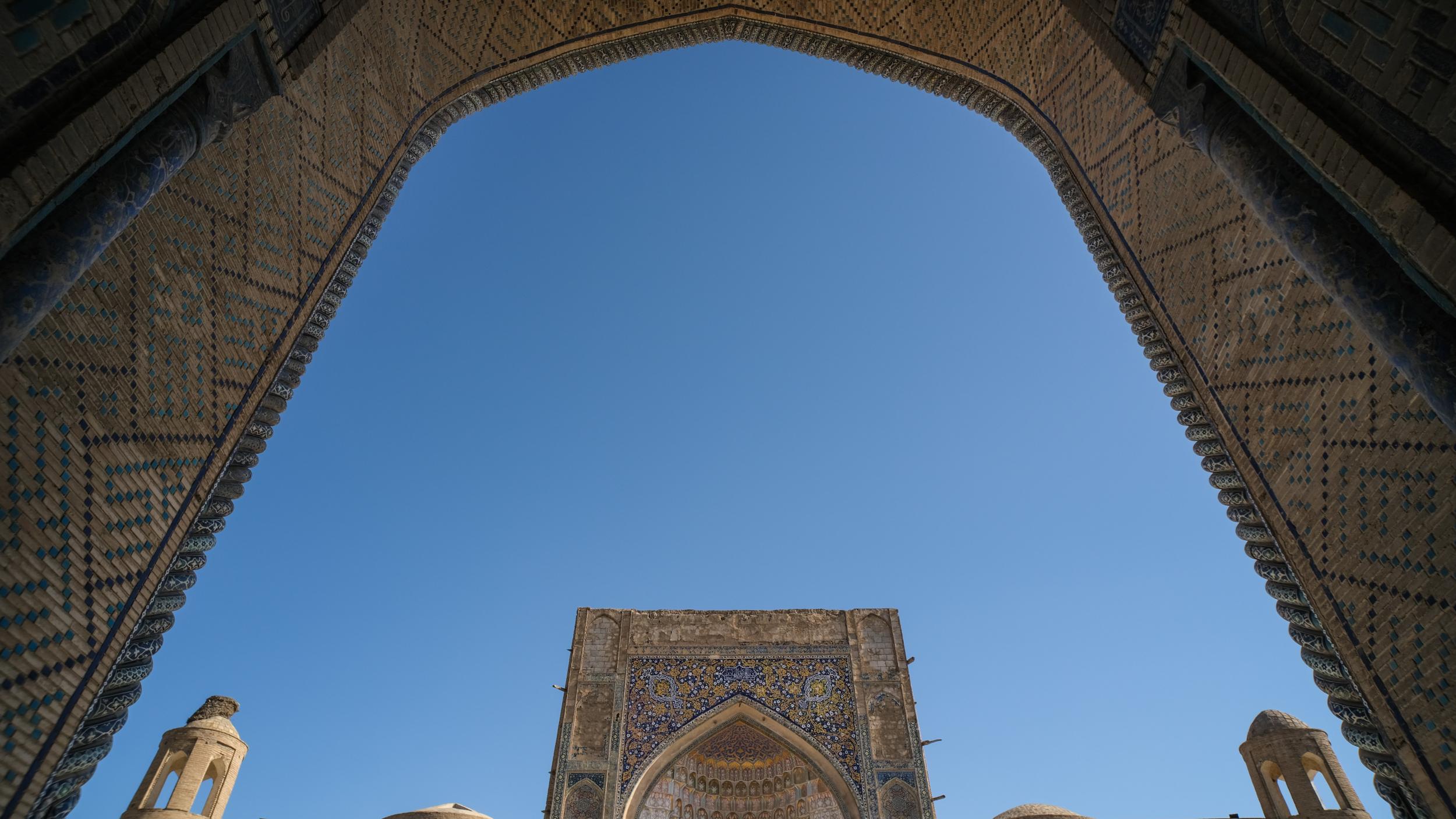
One of Uzbekistan’s main draws is the city of Bukhara, 155 miles to the west of Samarkand and the next point of call for visitors. From the train windows, the landscape is noticeably drier, with glimpses of water offering the only colour. As with train journeys across Kazakhstan to the north, the vast expanses of uninhabited scrub and desert are made starkly apparent when travelling by train. The importance of water to sustaining life in these conditions is made clear by the oasis towns and cities that have risen and fallen throughout the region’s history, with Bukhara being a fantastic example.
The town has been in a constant state of construction, renovation and rebuilding since it was first settled some 2,500 years ago. The religious remnants of 5th-century Judaism, nearby first- to seventh-century Buddhism, eighth-century Zoroastrian fire temples, the 10th century arrival of Islam, and the subsequent Soviet and post-Soviet eras, rather chaotically highlight Bukhara’s importance as a centre of trade and learning. The jumbled and fantastically varied architectural legacy is linked by the narrow winding lanes of the old town, with shaded gardens and homes hidden behind high walls.
In contrast, the large open courtyards of the city’s Unesco attractions – the Po-i Kalan complex, with the towering Kalan minaret, and the imposing walls of the Ark – are impressive public displays. The ornate tile work of the Miri-Arab and Abdulaziz Khan madrassas, or the rich carpets and dazzling local knives on display in the tourist bazaars and markets, bring vivid flashes of colour to the otherwise largely beige mud-and-brick city, and make perfect gifts or mementos before returning to Tashkent.
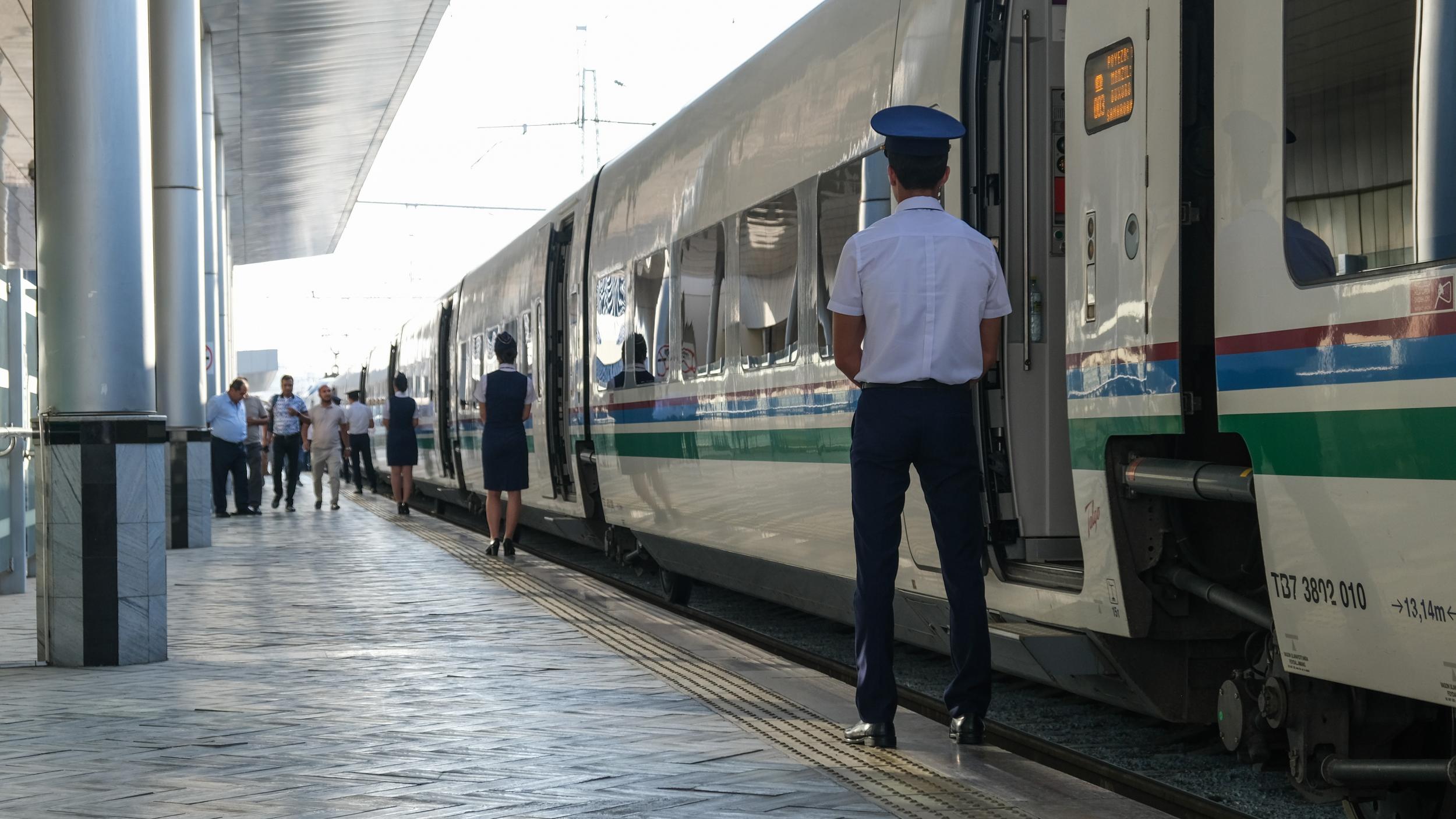
With free snacks and tea provided on the Talgo trains, and the restaurant cars on the older, slower routes offering affordable food and drink options to help pass the time, train travel across Uzbekistan is comfortable and easy – and the views offer a window into rural life in Uzbekistan that flying can never achieve.
Travel essentials
Getting there
A standard seat on the bullet train from Tashkent to Samarkand costs about £10, and £15 from Tashkent to Bukhara, with the comfort of business class doubling the price. Taking the same routes via the older Soviet-era trains is half the price (but double the travel time). e-ticket.railway.uz
Uzbekistan Airways flies direct from London Heathrow to Tashkent, while rail connections from Europe and China via Russia and Kazakhstan are available.
Where to stay
Bukhara: For a taste of Uzbek life behind the otherwise closed gates of the old town neighbourhoods, the small Nazira&Azizbek guesthouse, in the former Jewish quarter, is simple and clean, and comes with a delicious breakfast and plentiful green tea. Twin rooms from £20 a night.
Samarkand: The small garden and colourful Uzbek fabric wall hangings at Jahongir Guest House, a short walk from Registan, make it the perfect base from which to explore the city. Doubles from £40 a night.
Tashkent: The imposing Hotel Uzbekistan is impossible to miss in downtown Tashkent, just as its Soviet designers intended. Neither the most atmospheric, nor the best value option in town, it does however have a certain faded charm that is increasingly hard to find across the former Soviet Union. Doubles from £80 a night.
The Independent’s hotel recommendations are unbiased, independent advice you can trust. On some occasions, we earn revenue if you click the links and book, but we never allow this to affect our coverage.
Join our commenting forum
Join thought-provoking conversations, follow other Independent readers and see their replies
Comments